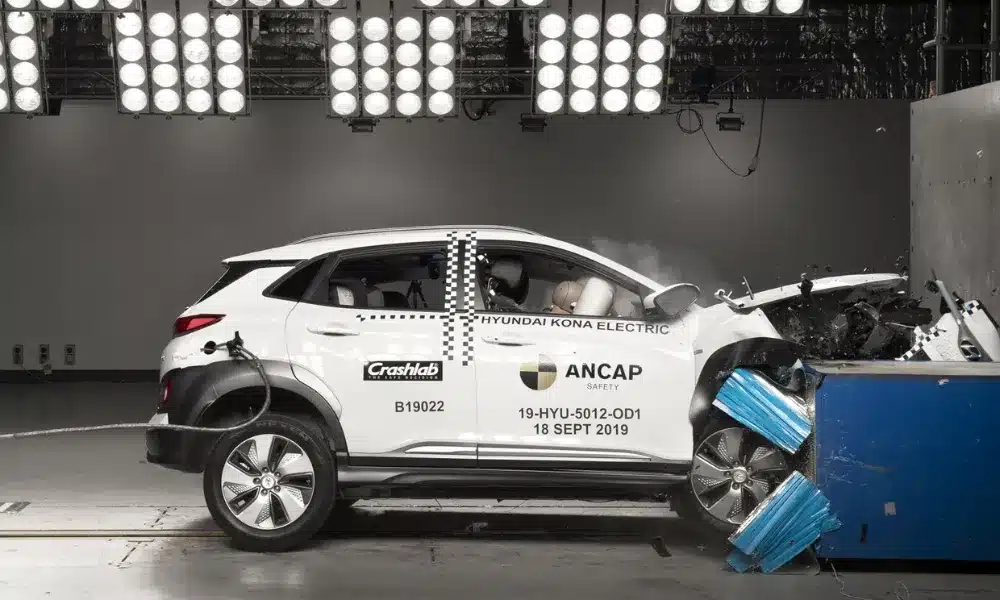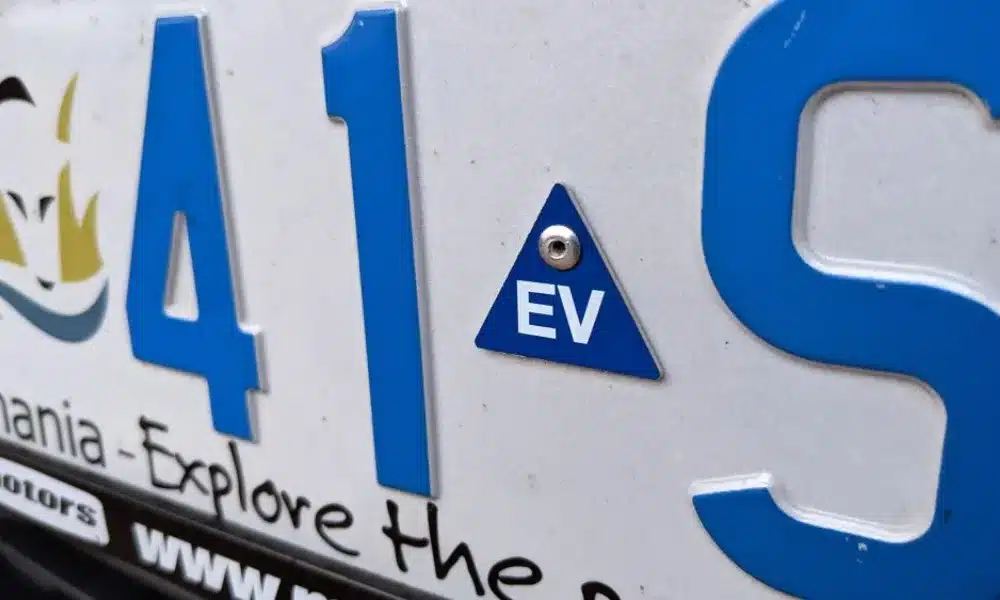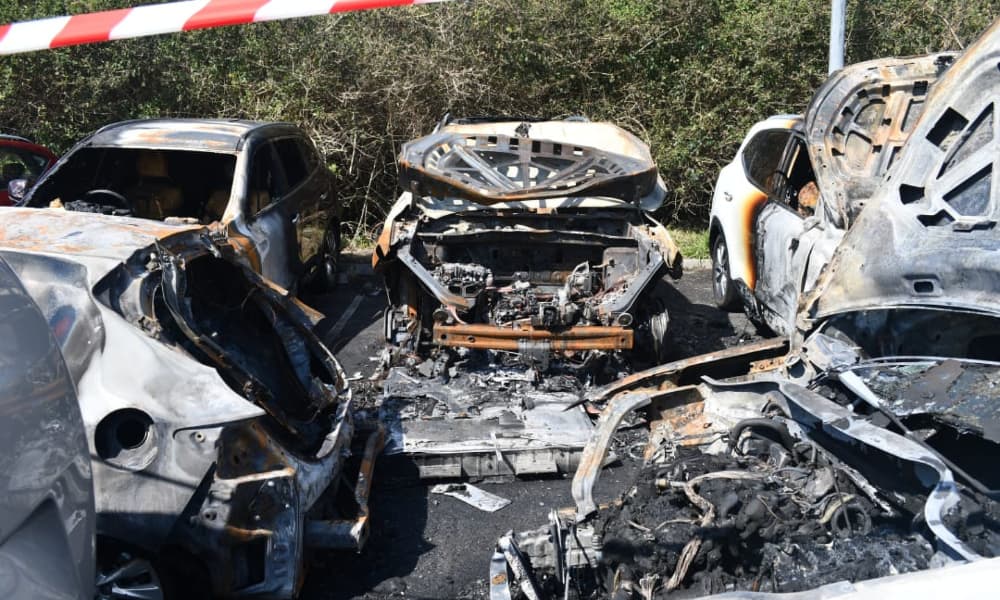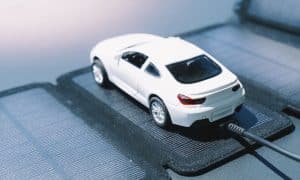Another day, another electric vehicle (EV) in the news that has burst into flames. Li-ion batteries have been receiving a bad rap and for seemingly good reason. The media have been splashing the ‘danger’ of these batteries across your news feed and social media, which has stirred up a lot of fear. Are EVs really in danger of exploding into flames?
On this page
Electric vehicles, are they safe?
You’ve read up on their range, charging speed, cost to run, and overall price, but the fear of a battery fire has left you with second thoughts. Electric vehicles are most commonly fitted out with a lithium-ion battery. Li-ion batteries can also be found in electric scooters/bikes/motorbikes, tools, phones, laptops, and many other items and appliances.
When a battery is damaged or becomes overheated, it can result in a fire and/or an explosion. The dangers are very real, but we need to look at why battery fires happen, and the risks associated with them.
Why lithium-ion batteries explode or catch fire
A correctly manufactured battery will not spontaneously combust for no reason. There is usually an external factor at play that can often be prevented. Here are some common reasons for lithium batteries of all types to fail:
- Damage to the battery: Usually from improper use or an accidental fall/collision.
- Incorrect charging: The incorrect charger is used, the incorrect voltage is used, the charger is damaged, or the battery is charged incorrectly.
- Temperature: The battery is stored or kept at a temperature greater than the recommended operating and storage temperature range as determined by the manufacturer. Often the location of charging can result in overheating.

Li-ion batteries will usually show signs of impending combustion. Damaged batteries might swell, become very hot to the touch, make cracking, popping or hissing sounds, emit a strange odour, or begin to smoke. If the battery begins to swell, emits an odour, or becomes incredibly hot, immediately remove it from charge and discard it when safe to do so. If It begins to make noises and/or smoke, remove from charge if safe to do so then leave the area immediately and call 000 if required.
Will my electric vehicle catch fire?
All batteries come with risk, but your EV is one of the safest vehicles on the road. Many reports and data points indicate that internal combustion engine vehicles (ICE) are significantly more at risk of fire than an EV. A 2021 report by AutoInsuranceEZ in the USA found that there were 1530 fires per 100,000 ICE vehicles compared to 25 out of 100,000 fully electric vehicles in the same timeframe. EV FireSafe, an Australian company with Australian Government support, found that between 2010 and June 2023 there were only 393 verified EV battery fires globally, out of 30 million electric vehicles. A 2023 report by the Swedish Civil Contingencies Agency found that ICE vehicles were 20 times more likely to catch fire than EVs in Sweden.
How are EVs safer than petrol or diesel cars?
Unlike your mobile phone, an EV is equipped with sophisticated cooling and monitoring systems to maintain the optimum and safe temperature of the lithium-ion battery. They also have auto-cut-off systems to stop thermal runaway, as well as manufacturing techniques and testing. Thermal runaway is an unstoppable chain reaction that would see a lithium-ion battery catch on fire or explode when temperatures exceed 60°C.
EVs are safer for many reasons, with the lack of petrol/diesel being a significant factor. ICE vehicles are very flammable and the risk of an engine overheating is far greater than an EV battery.
| VEHICLE WHOLE LIFE CARBON EMISSIONS ANALYSIS | |||
| Vehicle Type | Estimated lifecycle emissions (tonnes CO2e) | Proportion of emissions in production | Estimated emissions in production (tonnes CO2e) |
| Standard gasoline vehicle | 24 | 23% | 5.6 |
| Hybrid vehicle | 21 | 31% | 6.5 |
| Electric vehicle battery | 19 | 46% | 8.8 |
Are EVs safer in the event of a collision?
The US Insurance Institute for Highway Safety (IIHS) found that between 2011 and 2019, occupants of EVs were 40% less likely to make injury insurance claims. This comes down to the overall increased safety of electric vehicles (due to weight, collision avoidance systems, and onboard safety systems). In fact, the Australasian New Car Assessment Program (ANCAP) evaluates the high-voltage battery post every crash test for automatic cutoff functionality, potential fluid leaks, unusual heat, or fire risks. Of the 40-plus full battery-electric models assessed since 2011, none have resulted in battery fires with testing.

While incredibly unlikely, battery fires are still a risk in the event of a collision. Australian emergency services are trained in accident responses for electric vehicles. Many EVs will detach the connections to the battery once airbags are deployed. Emergency responders are trained on how to remove the battery if required. States such as Victoria have licence plate sticker requirements for EVs that will notify emergency responders of the presence of a battery.

Unleash the potential of solar battery storage! Home battery storage is considered safe, but understanding the operating requirements of your battery is paramount. We recommend the purchase and installation of a battery that can be installed indoors and away from direct sunlight. Energy Matters recommends the following battery manufacturers:
Why are electric scooter fires more common?
Electric scooters do not have the same standards or safety features as EVs. Most e-scooter fires are caused by incorrect charging. Off-brand chargers are a top reason for lithium-ion fires in scooters and it is mostly preventable. Only use the charger that came with the e-scooter and purchase one from the manufacturer if you require a new one. Follow the manufacturer’s guidelines when charging and storing your scooter.

If electric vehicles are safe, why do I see them so often in the news?
This is a fair question, but the answer lies within the question. News agencies and media will run news and headlines that attract the most views. Social media sites will show you content that you are interested in, which is why you might see the same news articles over and over again. Most articles you see will have headlines that are geared towards a click. Otherwise known as clickbait, these headlines draw the reader in but quickly reveal that the headline does not match the content. These headlines are carefully created to attract an immediate response, often without the person reading the article. Clicks and arguments in the comments section all drive traffic and traffic equals dollars.
Ask yourself, when was the last time you read about an ICE vehicle fire? Those stories don’t sell, even though they occur on a daily basis.
So, next time you come across a news article about an apparent EV battery fire, carefully read the details. You’ll likely find that the car was in an accident, it was a victim of arson, or the vehicle was tampered with.
FAQs | Frequently Asked Questions
Are electric vehicle batteries bad for the environment?
The environmental impact of electric vehicle (EV) batteries is a complex issue with no easy answer. The environmental impact of electric vehicle (EV) batteries is a multifaceted issue with advantages and drawbacks.
While EVs produce zero tailpipe emissions, a significant environmental impact arises from the mining and processing of raw materials used in their batteries. Cobalt, a key battery component, raises concerns due to its mining practices in countries with lax environmental and labour standards, leading to deforestation, water pollution, and human rights abuses.
Furthermore, cobalt processing is energy-intensive, contributing to greenhouse gas emissions. Despite these concerns, the overall environmental impact of EVs remains far lower than gasoline-powered cars, producing significantly fewer greenhouse gas emissions over their lifetime.
How are electric vehicle batteries made?
Electric vehicle (EV) batteries comprise thousands of cells, each containing a cathode, an anode, and an electrolyte. The cathode stores positive ions, while the anode stores negative ions. When the battery is discharged, the ions flow from the cathode to the anode, creating an electrical current. The electrolyte helps to transport the ions between the electrodes.
The manufacturing process for EV batteries is complex and involves several steps. First, the raw materials, such as lithium, cobalt, and nickel, are mined and processed. Next, the cathode and anode materials are produced. The cathode is typically made of a mixture of lithium, cobalt, and nickel oxide, while the anode is typically made of graphite. The cathode and anode are then coated onto a metal foil, and the electrolyte is added. Finally, the individual cells are assembled into a battery pack.
How long do electric vehicle batteries last?
Electric vehicle (EV) batteries are designed to last for many years and can typically be expected to last between 10 and 20 years. This is significantly longer than the lifespan of a traditional gasoline-powered car engine, which typically lasts for about 10-15 years. The exact lifespan of an EV battery will depend on several factors, including the type of battery, the driving conditions, and how the battery is cared for. However, with proper care, EV batteries can last many years and provide reliable transportation.
Can electric vehicle batteries be recycled in Australia?
Yes, electric vehicle batteries can be recycled in Australia. Australia is home to several companies developing and commercialising battery recycling technologies. One of the most prominent companies is Ecobatt, which has a facility in Campbellfield, Victoria. Ecobatt’s process can recover up to 90% of the materials in an EV battery, including lithium, cobalt, and nickel. These materials can then be used to make new batteries, which reduces the need to mine new resources.














































